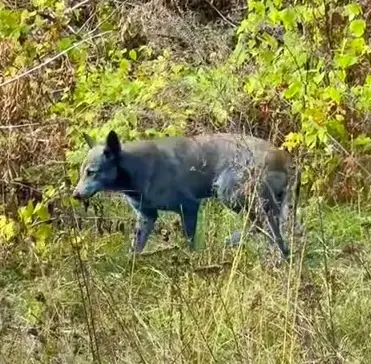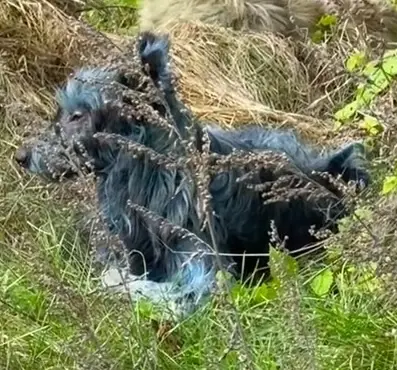Mystery Deepens as Abandoned Dogs Near Chernobyl Turn Blue, Leaving Scientists and Caretakers Searching for Answers
Nearly four decades after the Chernobyl nuclear disaster, a new mystery has emerged among the ruins — a population of stray dogs living near the exclusion zone has developed a striking blue tint in their fur. The unusual phenomenon, first reported by Dogs of Chernobyl, an affiliate of the non-profit Clean Futures Fund, has captured global attention and raised new questions about the long-term effects of radiation on wildlife in one of the most contaminated places on Earth.

Caretakers working with the Chernobyl dogs recently shared images of several animals with coats that appear to shimmer in shades of blue and gray, unlike anything seen before among the region’s strays. The photos, which quickly spread online, show dogs with fur that looks dyed or metallic — a visual that’s both haunting and beautiful, set against the ghostly backdrop of abandoned villages and overgrown streets.
Experts, however, are cautious about jumping to conclusions. Scientists and veterinarians working in the area emphasize that the blue coloration may not necessarily be a direct result of radiation exposure. It could be caused by contact with chemical compounds or industrial waste materials left behind after decades of decay. “We can’t say for certain what’s causing the discoloration without further testing,” said one researcher associated with the Clean Futures Fund. “But the sight of blue dogs roaming Chernobyl is something none of us expected to see.”

The dogs themselves are descendants of pets that were left behind when residents of Pripyat and nearby towns were evacuated following the catastrophic explosion at the Chernobyl nuclear power plant in April 1986. At the time, radiation levels were so high that residents were told they could not take their animals with them. Soldiers were later sent in to cull the remaining pets, but many survived and multiplied over the decades, forming wild packs that continue to inhabit the restricted zone today.
For years, volunteers and animal welfare groups have worked to care for the surviving dogs, vaccinating, feeding, and monitoring them despite the dangers posed by lingering radiation. These dogs, numbering in the hundreds, have become symbols of both endurance and tragedy — living relics of a man-made disaster that reshaped the modern world. The emergence of blue-tinted fur only deepens that symbolism, creating an eerie reminder of how nature continues to adapt to human mistakes.

Scientists from several institutions are now studying samples of the dogs’ fur, skin, and blood to determine what might be behind the blue coloration. Early theories range from mineral contamination in local soil and water to potential exposure to old industrial chemicals that have oxidized over time. In some areas of the exclusion zone, abandoned factories and metal structures have degraded, leaching compounds such as copper sulfate or cobalt into the environment — both of which can cause discoloration in hair or fur upon prolonged contact.
Still, there’s an undeniable sense of wonder among those studying the animals. The fact that these dogs have survived for generations in one of the world’s most toxic places is, in itself, extraordinary. Many of them live near the ruins of Reactor No. 4, where radiation levels remain dangerously high. Yet, the dogs appear healthy, alert, and even friendly toward visiting scientists and caretakers. “They’ve learned to live in harmony with this strange environment,” said one caretaker. “They’re survivors — maybe the toughest dogs on the planet.”

The discovery of the blue dogs has also reignited global fascination with Chernobyl, a site that continues to draw scientists, tourists, and filmmakers. Since the release of the 2019 HBO miniseries Chernobyl, public curiosity about the region’s wildlife has surged. Foxes, wolves, and wild horses have been spotted thriving in the exclusion zone, suggesting that nature has slowly reclaimed the land once devastated by human error. The blue dogs, however, are unlike anything else — an unexpected twist in a decades-long story of resilience and mystery.
For now, caretakers from the Dogs of Chernobyl group continue their work as usual — feeding, vaccinating, and documenting the animals while awaiting scientific results. Their mission remains focused on compassion rather than curiosity, reminding the world that behind the headlines and viral photos are living beings that have endured the unthinkable.

The mystery of the blue dogs may take months or years to fully understand. But in a place defined by tragedy, they’ve already become a new symbol of survival — a reminder that life, even when altered by the past, finds a way to continue in color.



